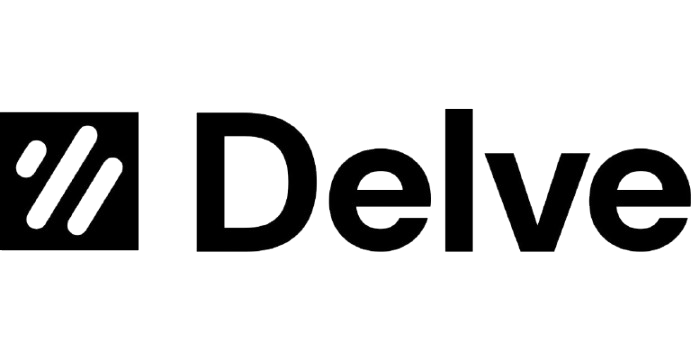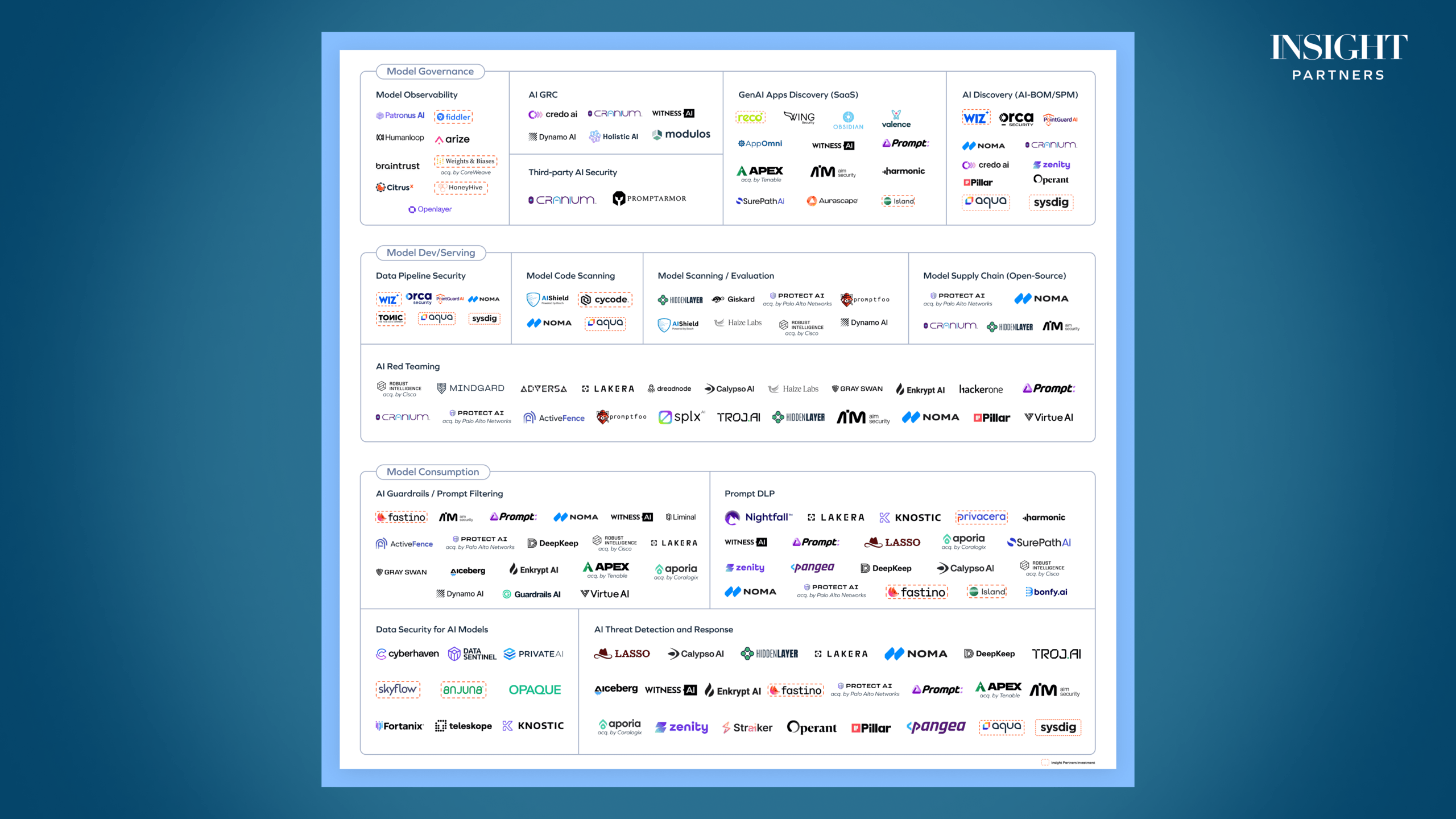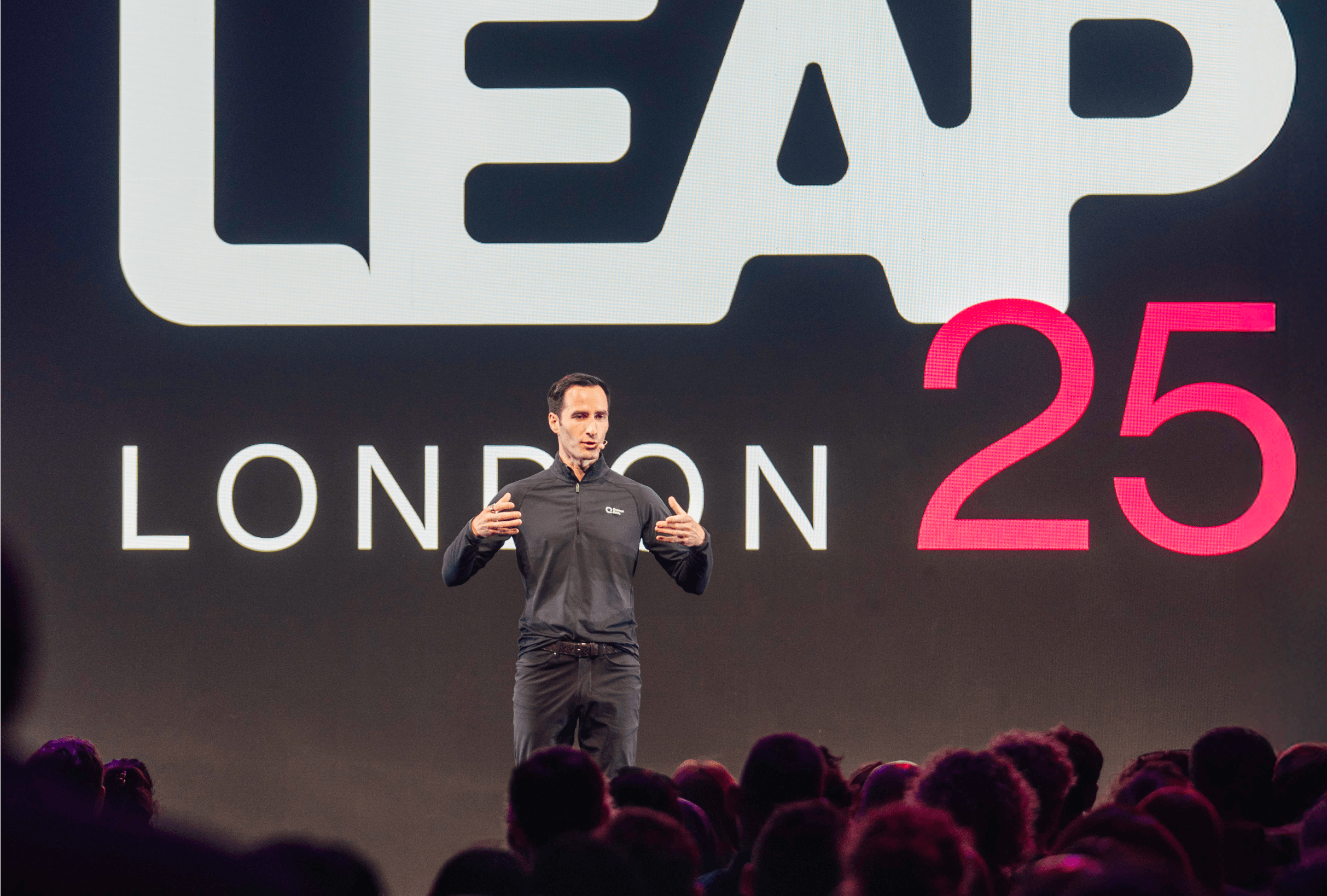Unlocking AI in GTM: Crossing the Scalability Gap

To drive value, you must scale AI. To scale AI, you must cross the Scalability Gap.
Unfortunately, most businesses are stuck. Their systems don’t integrate, their data isn’t clean, and their staff don’t have the skills to work with AI agents.
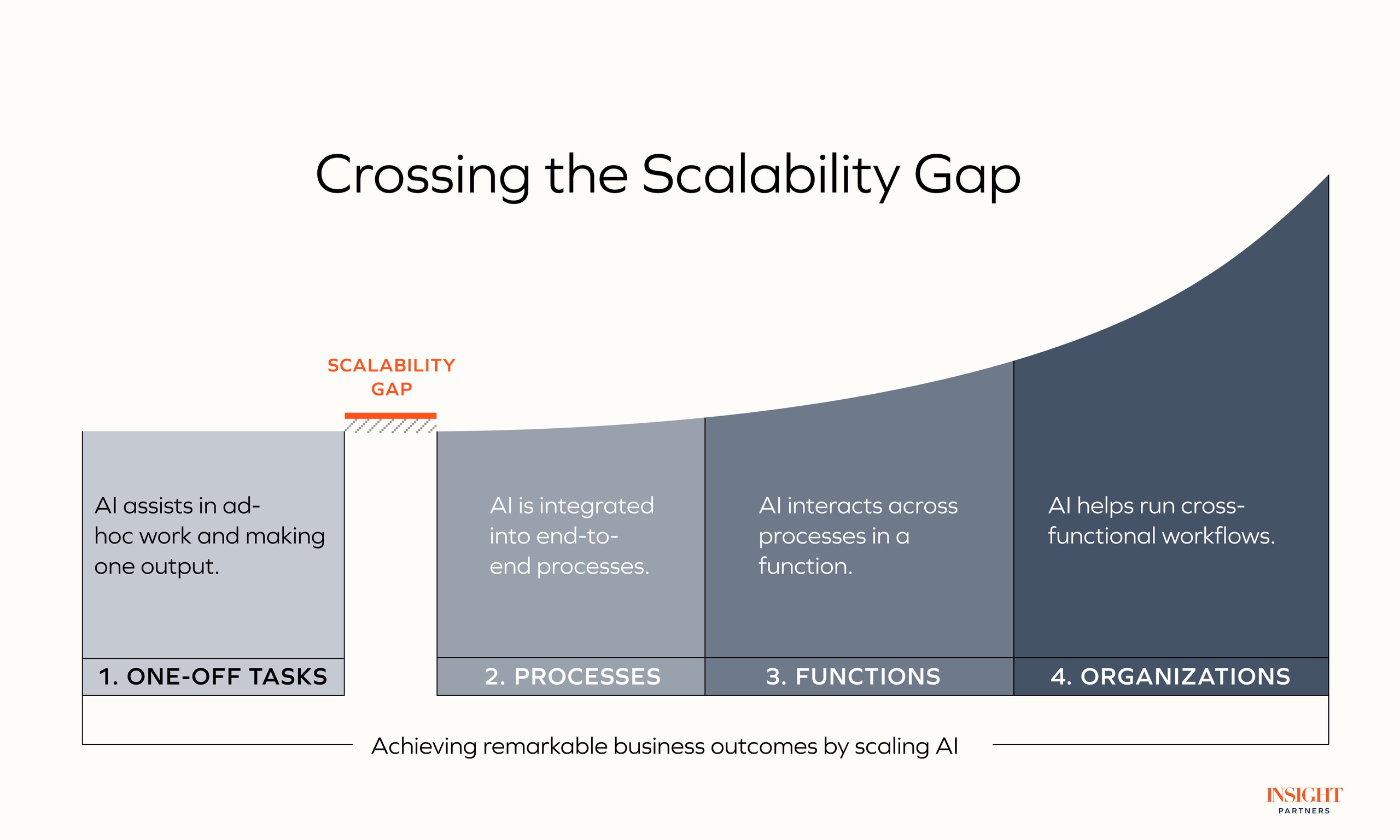
Cross the gap by piloting AI in a process that drives your business objectives. Scaling AI requires more than just buying your staff a chatbot — you must also consider how to adapt your systems and staff to a new operating model.
Here, Insight Partners’ advisory recommends the following five considerations to scale AI effectively and deliver remarkable business outcomes.
Five considerations to cross the Scalability Gap
1. What’s the goal?
OKR framework
- Pick an objective
- Select a strategy
- Set a goal
2. How can AI help?
AI-powered workflow
- List activities
- Break down tasks
- Map tasks to AI capabilities
- Organize tasks into a workflow
3. Which AI?
AI vendor criteria
- Pick an entry-point
- Set requirements
- Evaluate vendors
4. Integrated how?
AI integration plan
- Plan for change
- Architect agency
- Build for flexibility
5. What must change?
Change management plan
- Redefine staff roles and upskill workers
- Organize around refined roles
- Promote AI literacy and ownership
- Clarify policies and enforce them
1. What’s the goal?
Focus your AI initiative on a key business goal and the strategies that achieve it.
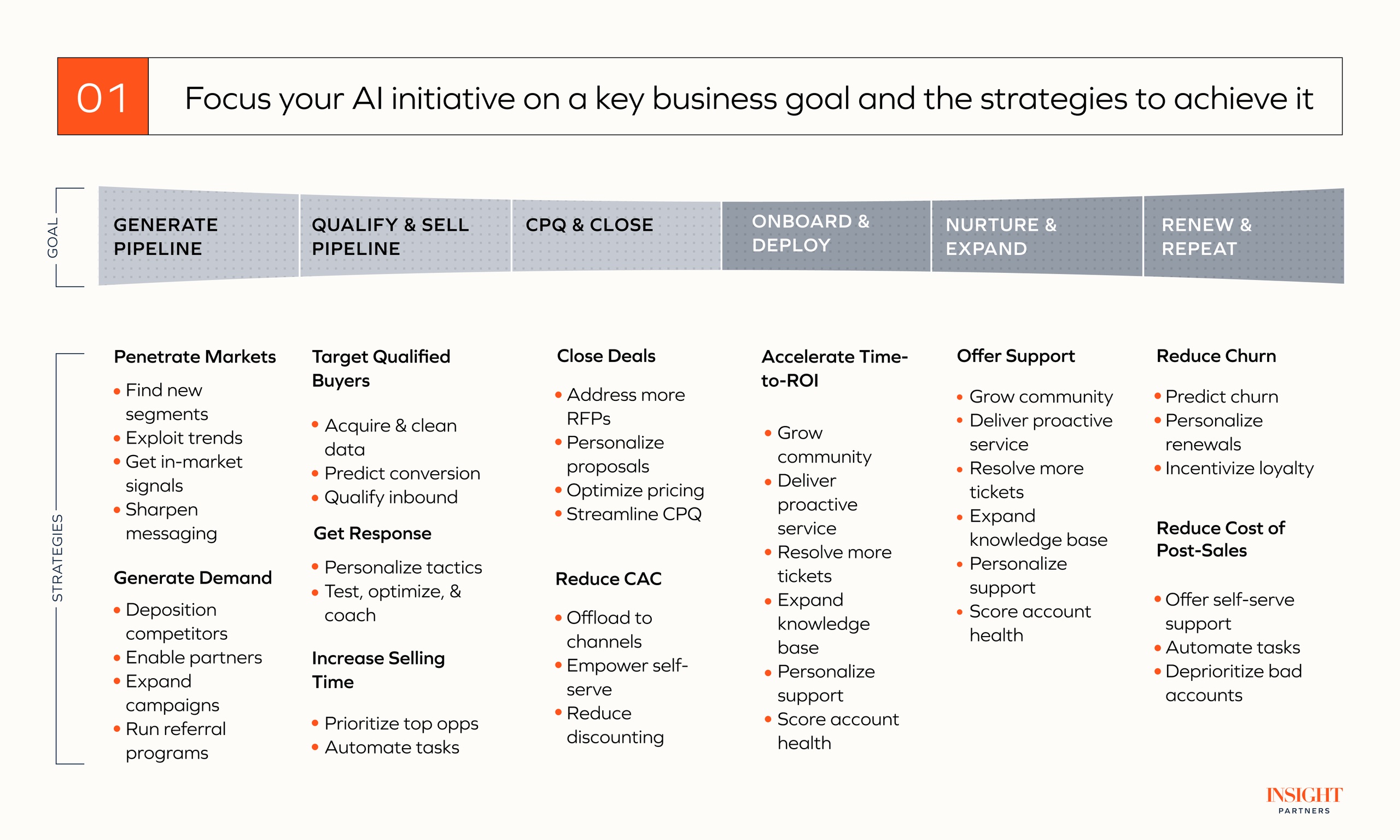
2. How can AI help?
List the GTM activities you undertake to achieve your goals. Then, break those activities down into tasks mapped to AI capabilities.
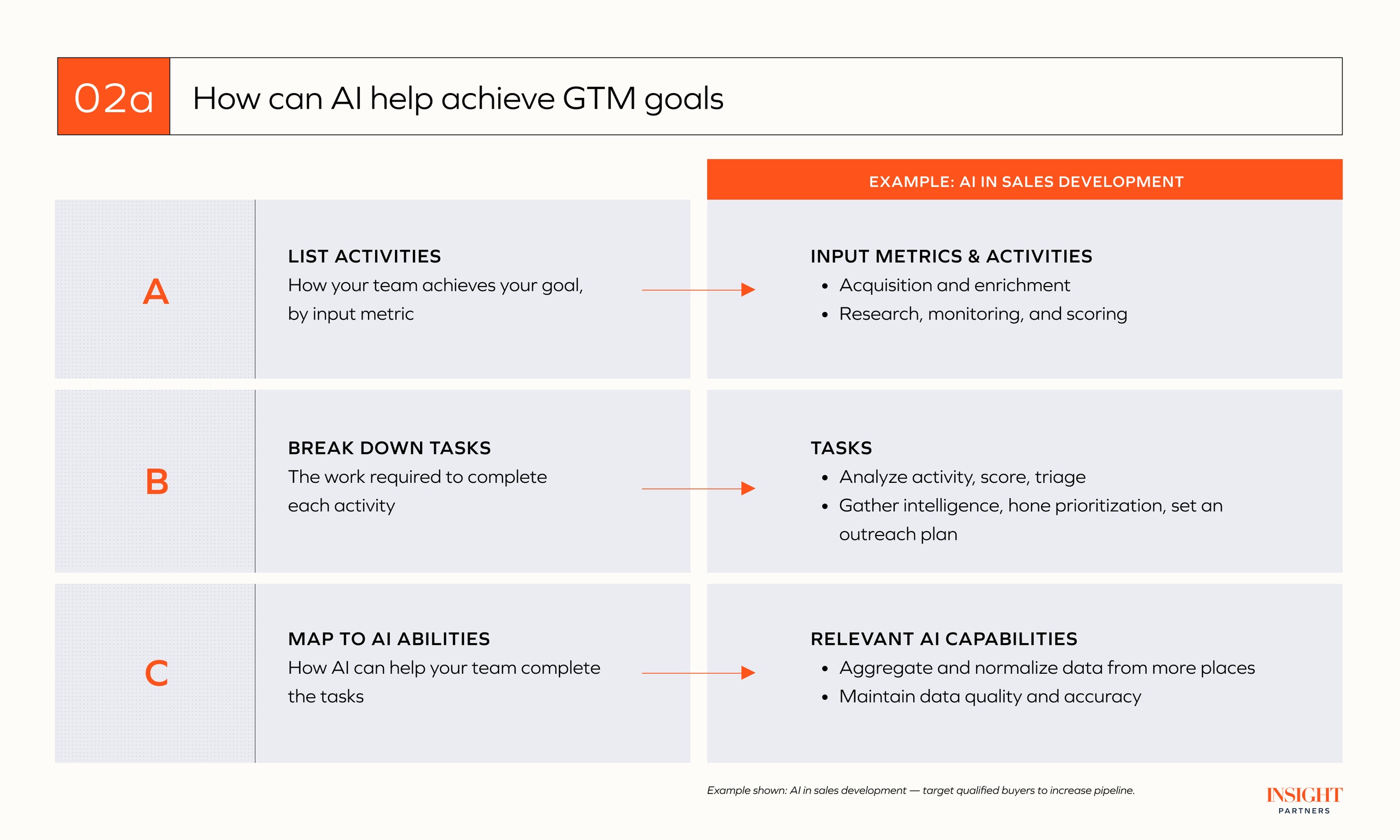
When designing a workflow, start with the existing “humans-only” process. Then, design AI’s role like you would a job candidate.
AI’s strength is in handling repetitive, voluminous, ambiguous, data-intensive, or analytical tasks. AI can predict, reason, and generate outputs with “near-human-level” intelligence, whereas humans are better suited to tasks involving judgment, creativity, empathy, or a broad worldview.
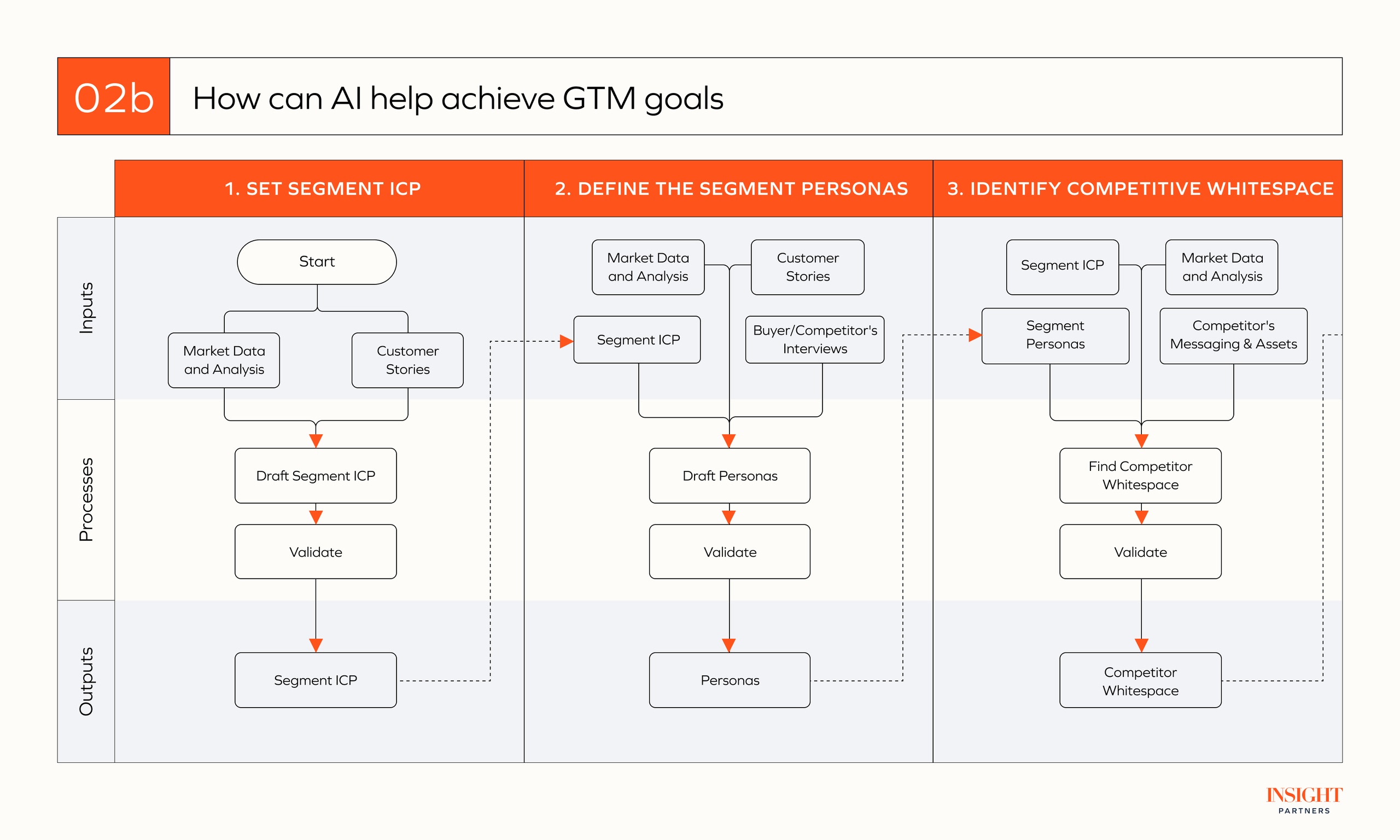
3. Which AI?
Pick an entry point, set requirements, and evaluate vendors.
Start by considering how different AI entry points serve your required capabilities and fit your business. For instance, you might need an AI tailored to your function and should focus on specialist AI tools versus generalists. In another case, you could get the most end users to adopt an integrated AI, which offers a native interface within their existing tools.
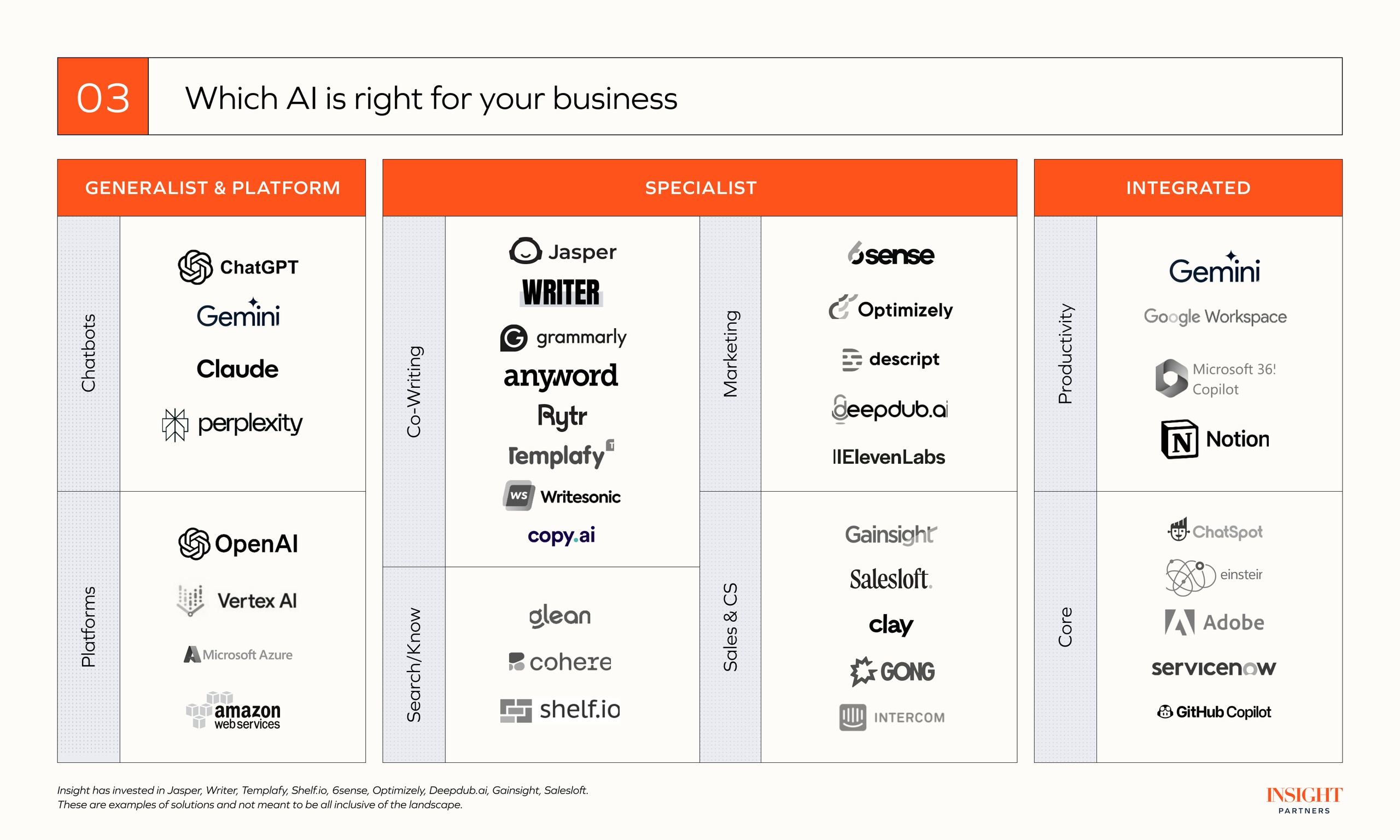
4. How should we integrate AI into our workflows?
Build a system to tie AIs together, quickly swap them out, and scale across use cases.
Plan for change
Build a modular architecture that can adapt to rapid changes in technology, M&As, and experiments; build a system that enables you to align AI with your evolving needs.
Architect agency
Empower AI agents to manage complex, nuanced tasks traditionally handled by humans or simpler automation systems.
Build for flexibility
Allow AI to handle diverse tasks and data types with minimal preprocessing while maintaining robust quality assurance.
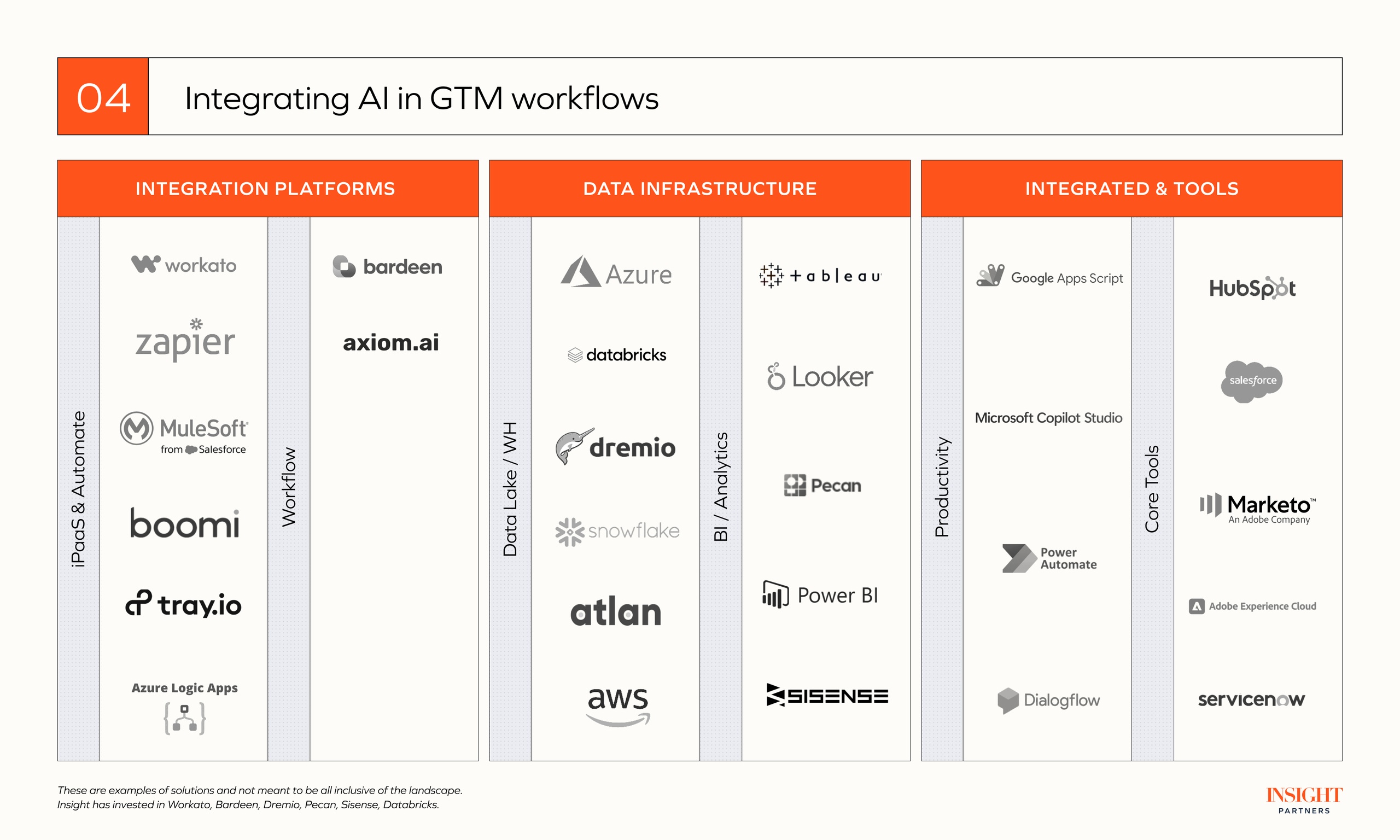
5. What about our organization must change?
Redefine staff roles, organize around new roles, and promote AI ownership.
Staff
Anticipate changes to job functions and the skills your staff will need to adopt AI.
- Redefine roles: Assess skill variety and autonomy, as well as task significance, volume, and quality standards.
- Set new goals: Reset excepted outcomes for “more” and “better.”
- Upskill: Provide training, resources, and communication forums to help existing staff transition.
Structure
Adapt your organizational structure to optimally align redefined staff roles.
- Consolidate and reallocate: Move staff away from “saturated” executional work and into higher-value-add roles.
- Flatten hierarchies: Support greater functional scope and autonomy by reducing unnecessary managerial layers.
Culture
Foster a culture that not only adapts to but also rewards embracing AI.
- Demystify AI: Offer AI education, demo it in action, and create forums for end users.
- Encourage ownership: Involve end users in AI planning, implement responsive feedback loops, and share company AI wins.
- Address AI-related concerns: Tie AI efforts to company values and communicate transparently about AI’s impacts.
Governance
Set policies for approved tools, accepted AI uses, & data handling.
Get the AI pocket guide
Get a PDF of the “Crossing the Scalability Gap” pocket guide.
Note: Insight Partners has invested in Jasper, Writer, Templafy, Shelf.io, 6sense, Optimizely, Deepdub.ai, Gainsight, Salesloft, Workato, Bardeen, Dremio, Pecan, Sisense, and Databricks.


